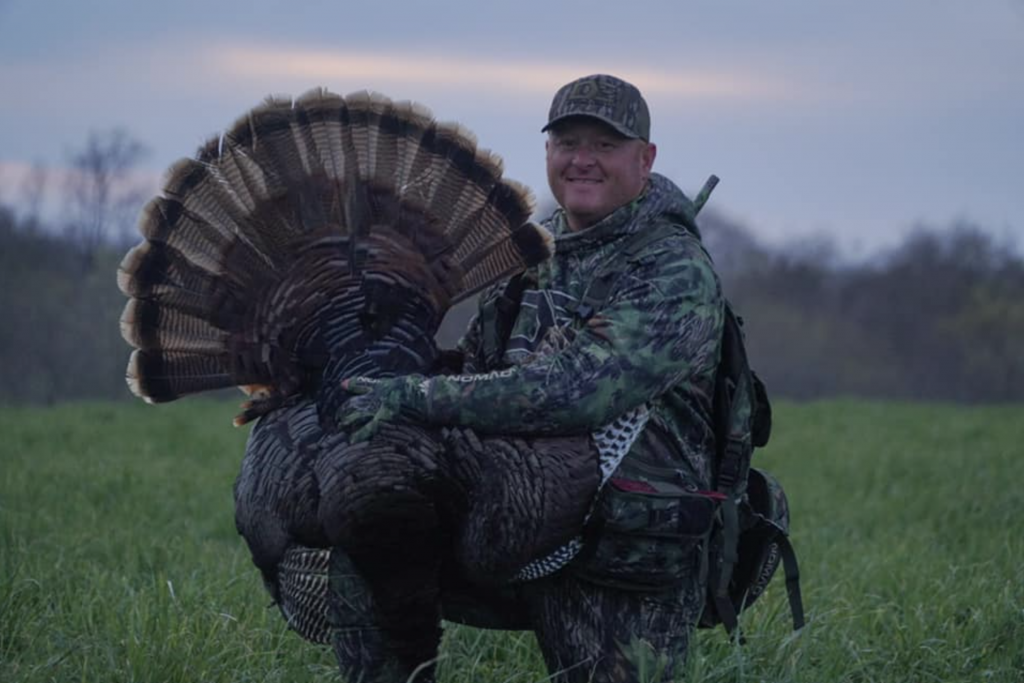Sounding Like Multiple Turkeys
Having a veritable flock of chattering hens on your side can produce big benefits in the turkey woods.
Sounding like two or more turkeys can be a game-changer when hunting, but it’s also a bit tricky. After all, there’s enough complexity to working a gobbler without switching between calls and creating excess movement.
But veteran callers know a few tricks to mimic multiple birds, and their wisdom can help you next season.
“There are a couple of options with a friction call that can help manipulate the sound so you can imitate two hens,” said Mitchell Johnston, founder of Dead End Game Calls and 2010 GNCC Senior Division champion. “Rasp on a friction call can come from how much pressure you’re putting on the striker dowel. When applying pressure to the dowel, the more pressure applied with the thumb, the clearer the yelp will be on the call. The less pressure you apply with your thumb, the raspier the yelp will be. In essence, the rasp is created by the vibration coming from the calling surface and the striker. By applying more thumb pressure, you are taking out vibration from the striker, making the yelp clearer in sound. By mixing up clear and raspy yelps, you can become multiple hens with the same call and same striker.”
Changing strikers is another easy way to mimic several hens on a pot call, Johnston said. Also, striker placement on the call makes a difference.

“Most if not all pot calls are designed to run from the outside edge of the calling surface to the direction of the center of the call,” he said. “Yelping from the outside edge toward the center of the call will help you get a clearer front end to your yelp and a raspy back end. By changing the location of where you are yelping on the call, you can change the tone of your yelp and sound like two or more hens.”
Two-sided box calls have the inherent ability to imitate two turkeys, Johnston said.
“Our Dead End Mudslide box calls are tuned to sound like a different hen on the right side of the box versus the left side,” he said. “Most box calls do have that difference between sides if it’s a box designed to run as a two-sided call. Another way to get two hens from one box call is by simply laying your thumb on the side rail of the box. You just barely need to touch your thumb to the side of the wood in which you are running the call on, and it will decrease the volume of the call. This can help to imitate a hen closer and one farther away.”
With mouth calls, increasing tongue pressure on the latex produces different hen sounds. More pressure produces a higher-pitched yelp, and less tongue pressure increases rasp.
“Air flow on the call makes a difference,” Johnston said. “My favorite mouth call is my signature series batwing cut we make here at Dead End. It’s a call I can easily manipulate the direction of air flow on to imitate more than one bird. If I run my air flow down the right side of the call, it will produce a clearer or higher front end to my yelp. Same with the left side of the call. When I run my air down the center of the call, I get a raspier, coarser yelp.”
And being able to create so many different-sounding turkeys can help tremendously with tough gobblers.
“Any time I know a tom has two hens or more with him, I like to sound like more than one hen,” Johnston said. “That can certainly help put the odds in your favor. If I’m between a tom and hens on the roost, I typically will try to sound like more than one hen. It can give the real hens a little more competition and can help the tom close the distance in my favor.”
Johnston said one of the biggest benefits of sounding like multiple hens occurs when he can “steal” the voice of a hen a gobbler is accustomed to hearing.

“What I mean by that is if a hen starts to yelp and I can change my yelp to match her tone, rhythm and cadence, I then have matched a turkey that the gobbler normally hears,” he said. “In many cases, that has closed the deal for me that hunt. However, if it doesn’t during that hunt, it generally does over the next day or so.”
